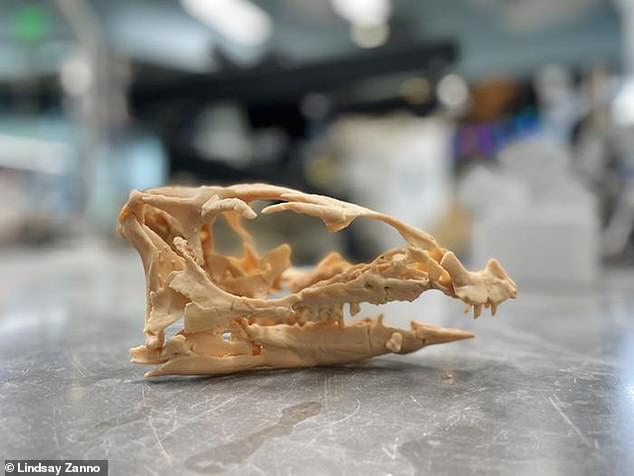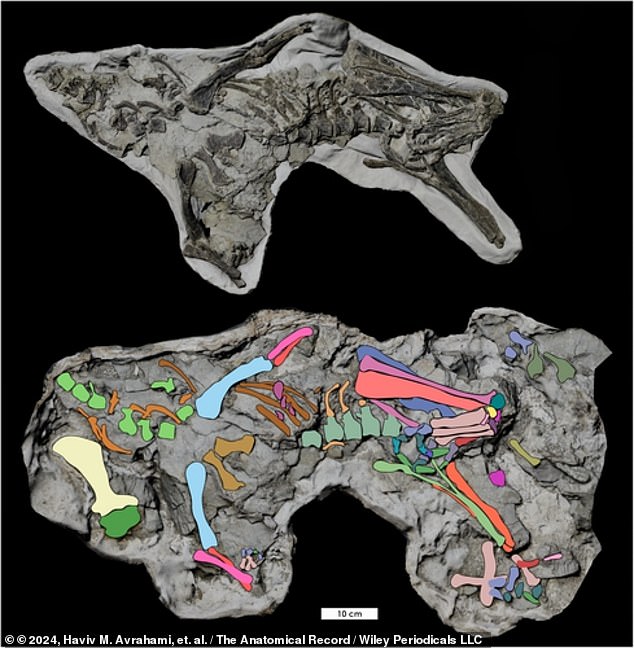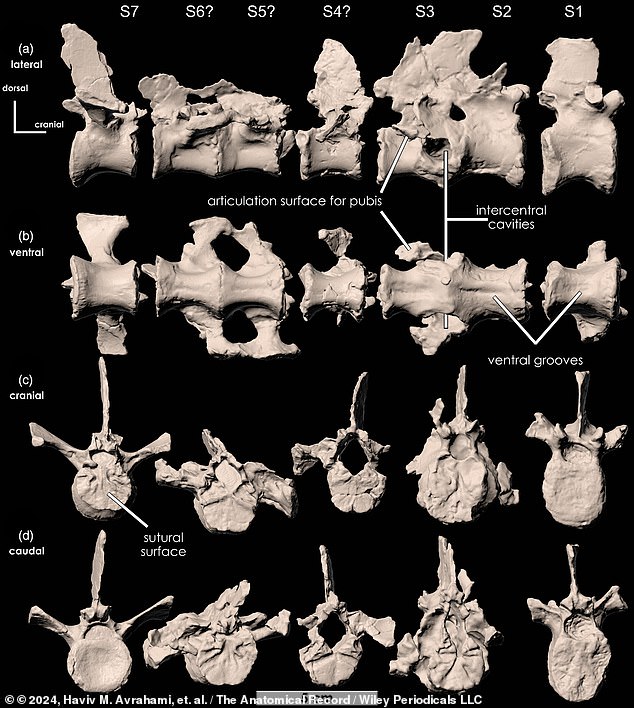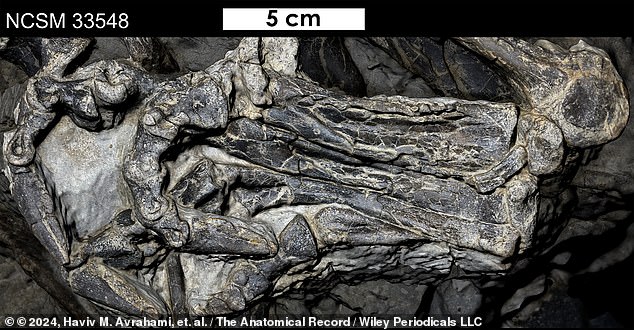New dog-sized dinosaur species that lived underground discovered in Utah
Paleontologists have discovered “exceptionally” well-preserved fossils of a dog-sized dinosaur that lived underground in Utah more than 99 million years ago.
The new species, named Fona herzogae, was a small, herbivorous creature that powerful biceps, a fused pelvis for stability, and large hind legs that were ideal for its underground lifestyle.
Researchers found nearly complete skeletons of several creatures that were still in their original death pose, with their chests down and their forelimbs spread, suggesting they died beneath the surface.
Paleontologists have discovered fossils of an “exceptionally” preserved dinosaur that lived in Utah more than 99 million years ago. The fossils belonged to a species of small, herbivorous dinosaur that burrowed underground

The Fona fossils were so well preserved that the team was alerted to the possibility that the creatures may have spent time underground. Pictured: 3D-printed Fona skull
The researchers found the Fona in the Cedar Mountain Formation, an area bordering the northwestern corner of Colorado and part of the Mussentuchit Dune, a large sand dune near the Green River.
Researchers from North Carolina State University and the North Carolina Museum of Natural Sciences said they were surprised by the number of dinosaur fossils they had found in the area since 2013, most of which were still in their original, dying position.
The formation was once covered in a warm, wet, muddy environment caused by a vast ocean to the east of the area and volcanoes and mountains to the west.
This type of environment would normally cause fossils to deteriorate or become dispersed over time, but the Fonas were so well preserved that the team believed the creatures may have spent time underground, the study published in American Association for Anatomy.
“The best explanation for why we find so many of them and why we find them in small groups of multiple individuals is that they were living underground at least some of the time,” said Dr. Lindsay Zanno, co-author of the study and an associate professor at North Carolina State University.
‘Fona has actually done the heavy lifting for us by digging itself in all over this area.’
The researchers found skulls, leg and pelvic bones, spines, ribs and chevrons – bones that are attached to the underside of the tail, among other places.

Researchers found nearly complete skeletons of several creatures still in their original death pose, with their chests down and forelimbs spread, suggesting they died beneath the surface
The Fona had a number of features that indicated it was a digger, including larger biceps, strong muscles in the hips and legs, fused bones along the pelvis, and hind legs that were noticeably larger than the forelimbs.
It had a simple appearance that was very different from other richly decorated creatures, such as horned, armored, and crested dinosaurs.
The researchers haven’t yet located the caves that Fona may have dug, but they did report finding tunnels in Idaho and Montana that its close relative, Oryctodromeus, dug, confirming their suspicions that the dog-like dinosaur also dug underground.
This is a new discovery, as previous scientific discoveries only indicated that dinosaurs lived in water, lived on land or flew through the air. However, the Fona offers a fourth possibility: the species also lived underground.

The Fona has several characteristic features that indicate it was a burrower, including larger biceps muscles, strong hip and leg muscles, fused bones along the pelvis, and hind legs that were noticeably larger than the forelimbs.

These fossils can give researchers more insight into the diversity of different dinosaur species and their ability to adapt to certain environmental conditions or how they escaped predators. Pictured: The left pes of the Fona – an area that connects the tendons of three thigh muscles
“The fossils in the record are biased in favor of larger animals, largely because in floodplains like the Mussentuchit, small bones often become scattered on the surface, rotted, or eaten before being buried and fossilized,” said Dr. Haviv Avrahami, lead author of the study and a digital technician at the North Carolina Museum of Natural Sciences.
‘But Fona is often found complete, with many of its bones preserved in the original death pose, chest down and forelimbs spread, and in exceptionally good condition.
‘If the animal had been in a burrow underground before its death, this type of preservation would have been more likely.’
These fossils can give researchers more insight into the diversity of different dinosaur species and their ability to adapt to certain environmental conditions or how they escaped predators.
“People often have a myopic view of dinosaurs that is not aligned with scientific insights,” she continued.
‘We now know that dinosaur diversity ranged from small tree-dwelling hoverflies and nocturnal hunters to sloth-like grazers and, yes, even underground shelters.’
